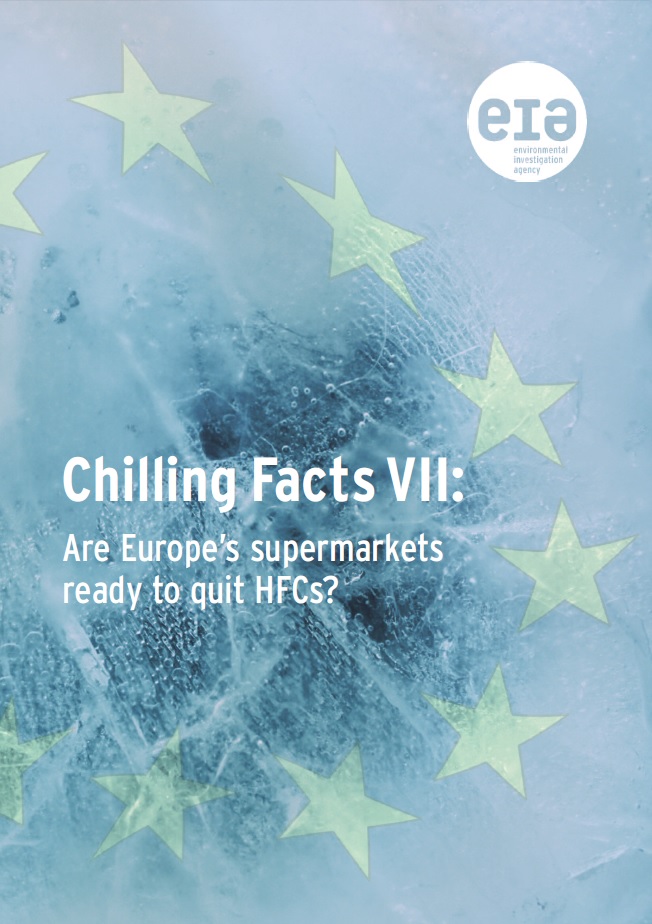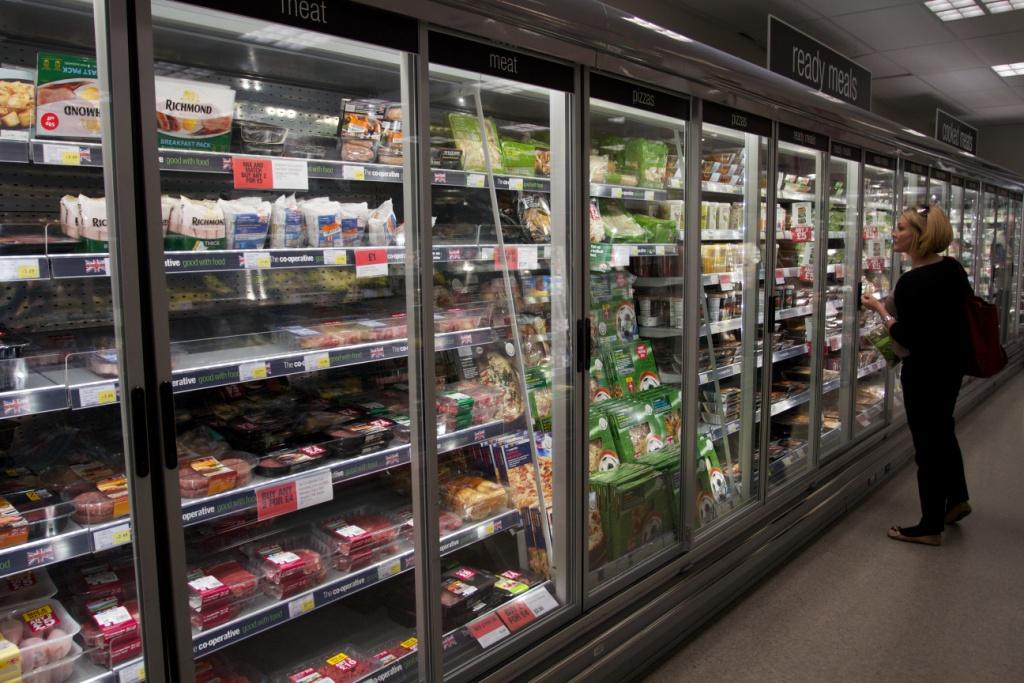Retail must adopt HFC-free refrigeration – and fast!
As summer finally arrives in the UK and London temperatures reach a sticky 27°C, EIA yesterday released a report quizzing Europe’s supermarkets on the climate impacts of their refrigeration.
Supermarket refrigeration has taken a significant toll on the climate and hydrofluorocarbons (HFCs), the greenhouse gases widely used in cooling systems, are a big part of the problem.
 Back in 2008, EIA began to survey retailers in the UK about their use of HFCs and alternative climate-friendly technologies. The results, published in our Chilling Facts series, were as shocking as they were disappointing – just six were trialling natural refrigerant alternatives to HFCs, and in only 14 stores.
Back in 2008, EIA began to survey retailers in the UK about their use of HFCs and alternative climate-friendly technologies. The results, published in our Chilling Facts series, were as shocking as they were disappointing – just six were trialling natural refrigerant alternatives to HFCs, and in only 14 stores.
Fast-forward to the present and we’re pleased to find that forward-thinking innovation in the sector, encouraged by the pressure of our reports and new European legislation means much has changed for the better.
Chilling Facts VII: Are Europe’s supermarkets ready to quit HFCs? is the latest in our series of reports urging retailers to adopt HFC-free cooling. EIA and partners Climate Advisers Network, ECODES and ZERO questioned 22 retailers from 37 countries on the current deployment of refrigeration technologies.
The answers show clearly the progress made by some in moving away from HFCs and the technological innovations which demonstrate that going HFC-free can also save energy even in warm southern European climates, something that has been a concern to southern European retailers.
We’re also concerned, however, that the pace at which many supermarkets are moving away from HFCs is not fast enough to comply with the stringent legislation in place in Europe.
The EU F-Gas Regulation, which came into force in 2015, will gradually but significantly reduce HFC supplies available on the European market. Starting 2018, there is a significant cut in available HFC quotas – in real terms estimated to be 48 per cent from the baseline – and the supermarket sector is widely expected to make the biggest adjustments to cope with this.
The latest Chilling Facts report highlights that many retailers seem to have limited awareness of the impact the fast-acting phase-down will have on imminent HFC supplies. Already, HFC prices are beginning to spiral; one major producer has increased the price of HFC-404A, the most commonly used HFC refrigerant, by 62 per cent over the first quarter of 2017..

Doors on fridges at the Coop (c) EIA
If retailers do not pick up the pace of their adoption of HFC-free refrigeration, they risk supply disruption and eye-watering refrigerant bills.
And change isn’t just happening in Europe – market transformation is also taking place at the international level. In 2016, the Kigali Amendment to the Montreal Protocol was adopted, mandating a global move away from HFCs and a transition to sustainable, less harmful cooling technologies. Many of the retailers have global estates and now need to be looking at transferring best practice from Europe to their stores in developing countries.
A rapid shift to natural refrigerants will allow retailers to reap long-term savings – for the benefit of shareholders, consumers and the planet – and to become one of the leaders in climate-friendly refrigeration technologies.
EIA strongly urges the European commercial refrigeration sector to lead by example, prove to the world that we can cool without heating up the planet and transition to HFC-free cooling technologies – before the financial heat is well and truly on.

